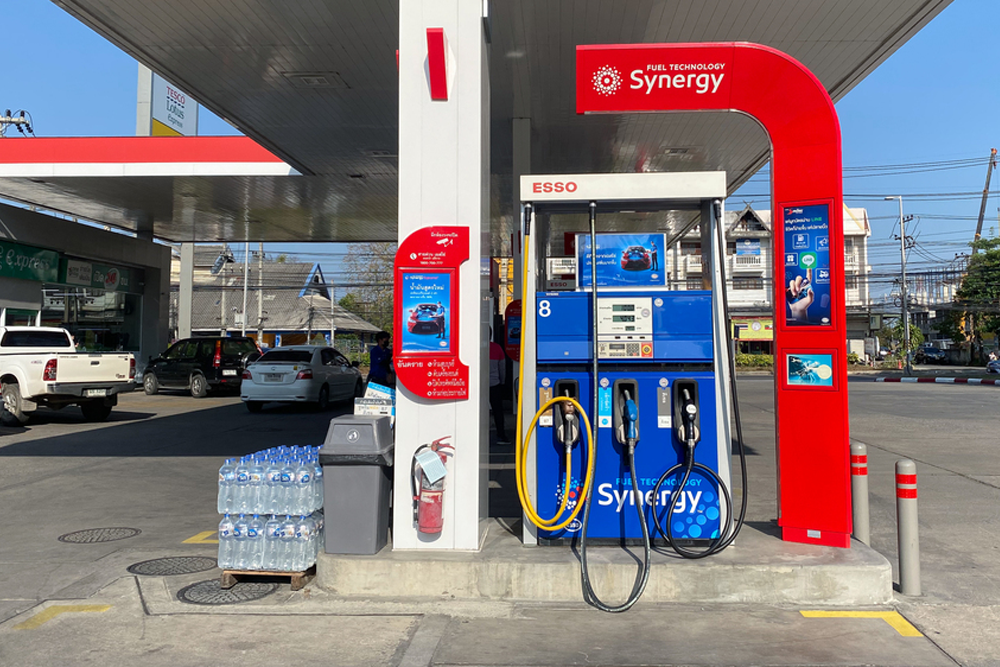 04
Dec
04
Dec
Gas Station Fire Suppression System Explained
- 0 Comment(s)
- December 4, 2024
A gas station fire suppression system may not be something most people think about while filling up their tank. However, it plays a key role in maintaining safety. In the event of a fire, this system activates swiftly and prevents what could be a disaster from escalating. Below, we explore the function and importance of fire suppression systems in gas stations.
Why Gas Stations Need Fire Suppression Systems
Gas stations handle highly flammable liquids daily, which presents a significant fire risk. The combination of fuel vapors and potential sparks creates an environment where even a small ignition could quickly lead to a catastrophic fire.
Fire suppression systems are installed to prevent such scenarios by reacting immediately to contain and extinguish fires before they spread. This rapid response is not only necessary for safety but also a requirement for compliance with regulatory standards.
How Gas Station Fire Suppression Systems Work
A fire suppression system can be likened to a highly trained fire response team that is always on standby. The system consists of strategically placed nozzles around fuel dispensers and other vulnerable areas. Upon detecting a fire, these nozzles release a suppression agent designed to extinguish flames swiftly.
The process begins with detection. Sensors positioned around the station monitor for high temperatures or visible flames. Once a potential threat is identified, the system is activated. Suppression agents, typically dry chemicals or foam, are discharged, rapidly smothering the fire and cutting off its fuel source. This quick action minimizes damage and protects lives.
Components of a Fire Suppression System
A gas station fire suppression system is a sophisticated combination of components working together to guarantee optimal performance:
- Detection Sensors: These sensors act as the system’s eyes, constantly monitoring for temperature changes or visible flames near fuel dispensers and pumps.
- Control Panel: Serving as the system’s brain, the control panel processes signals from the sensors and triggers the appropriate response if a threat is detected.
- Discharge Nozzles: Located above and around the fuel pumps, these nozzles release the suppression agent once the system is activated.
- Suppression Agent: The suppression agent, typically a dry chemical or foam, acts to smother the flames by depriving them of oxygen and rapidly cooling the fire.
The Types of Suppression Agents Used
Fire suppression systems in gas stations use agents that are specifically designed to combat fuel-related fires. Dry chemical agents interrupt the chemical reactions that sustain the fire, while foam agents form a barrier that suffocates the flames and prevents the fuel vapors from reigniting. Both agents are chosen for their ability to act quickly and minimize downtime for the gas station.
Maintaining a Fire Suppression System
Like any critical safety system, regular maintenance is necessary for a fire suppression system’s reliability. Routine inspections make sure that all components are functioning correctly.
Detection sensors must be calibrated, suppression agents should be checked for readiness, and discharge nozzles must be kept clear of obstructions. Neglecting maintenance can lead to system failure when it is most needed. Regular servicing guarantees the system’s effectiveness during a real emergency.
The Human Element
Although fire suppression systems are highly reliable, human oversight remains a key component of fire safety. Gas station employees are often the first to notice potential issues, such as fuel spills or malfunctioning pumps.
Training staff in emergency procedures and system operation is critical so that, in the event of a fire, everyone knows exactly what actions to take. The collaboration of well-maintained technology and well-trained personnel forms the strongest defense against fire hazards.
The Importance of Quick Action
While gas station fires are rare, their occurrence demands swift action. Fire suppression systems are designed to react immediately, cutting off the fire’s access to additional fuel and preventing it from escalating. The goal is to stop the fire in its tracks. This safeguards lives and property and minimizes the risk of widespread damage.
Partner with Yadkin Fire & Safety for Fire Protection
Fire suppression systems at gas stations are an invaluable safety feature, always prepared to intervene in the event of a fire. Ready to keep your gas station safe without the hassle? Yadkin Fire & Safety has your back. With over 25 years of experience, we specialize in fire suppression systems, fire extinguisher recharges, and more.
Our certified technicians are committed to keeping your fire safety equipment in top shape. We guarantee your business stays protected and compliant. Don’t wait until it’s too late—give us a call at (336) 699-4370, and let’s work together to keep your station safe and ready for anything.

